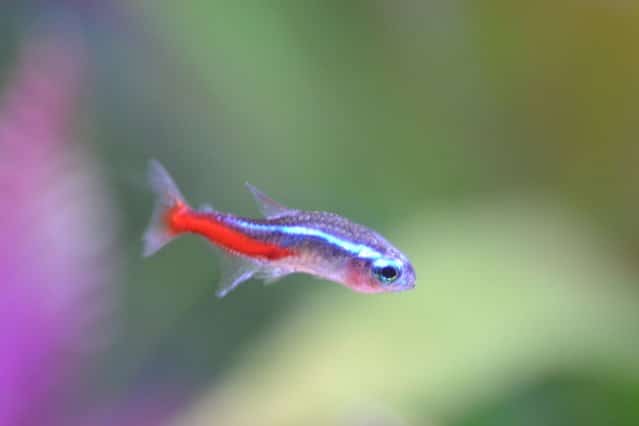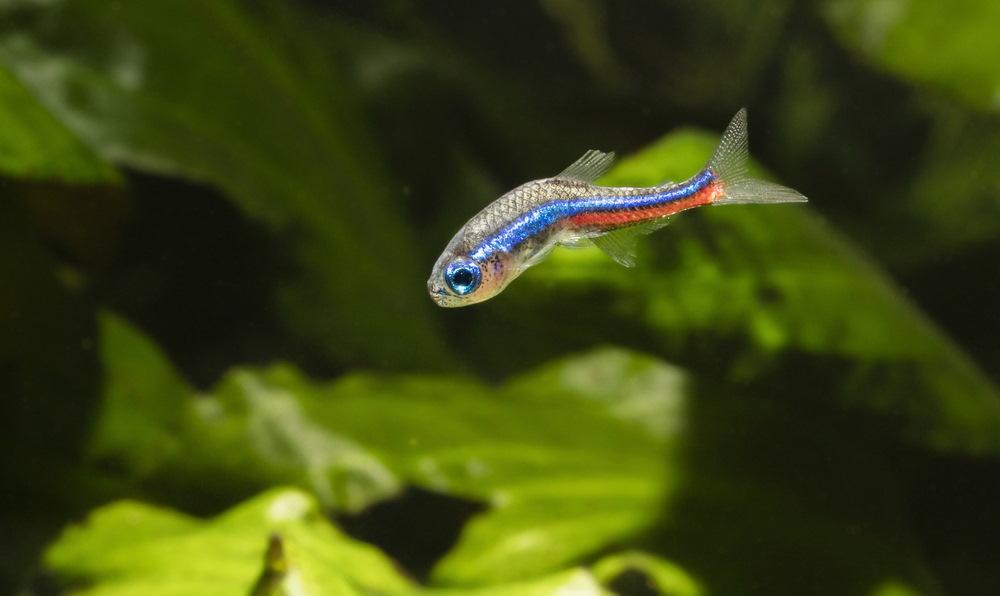Any beginner or experienced hobbyist should be familiar with “neon tetra disease” (NTD), a common affliction in aquariums.
A neon tetra had been the first fish to get the illness, hence the name. While you will mostly see this disease infecting neon tetras, it can still afflict other fishes too, including Cichlids and cyprinids.
If you want to keep a healthy aquarium and prevent its residents from contracting the disease, it’s crucial to keep an eye for symptoms that may arise.
Unfortunately, NTD is generally incurable, which is why it is better to prevent it before the infection runs wild and affects other fishes.
Today, we will help you understand more about this disease so that you can take the appropriate preventative measures in your tank. Let’s go!
Table of Contents
What is Neon Tetra Disease?
The disease arises from Microsporidian parasite spores in live foods or other hosts. If your fish consumes an infected matter, the parasite will enter their body. Some people also call it the pleistophora disease.
Note that neon tetra disease is degenerative, which means the initial symptoms may appear mild but it can quickly turn severe.
It’s one of the most common obstacles that an aquarist will face at least once, though likely more.
Symptoms

The easiest way to prevent mass infection is to spot it during the early stages. So, what are some of the symptoms of the disease?
When a fish becomes infected, they will grow restless especially during the night. Watch out for any fish that begins to drift away from their usual school. This is an obvious sign that something’s up. After this, they may swim unpredictably and show abnormal behaviors.
As the infection worsens, neon tetra disease will cause white spots in the muscle tissues. The coloration of a fish may start to fade or become muted, usually along their spine. In addition to affecting its color, the damaged muscle may make it hard for them to swim properly.
Sometimes you might see that a fish becomes lumpy. This is because the cysts have developed severely and caused deformation to the muscles.
Other than that, the disease can cause secondary infection, which in turn may induce bloating. Some of the more severe cases may also trigger the causal fin to rot.
Which Species Can Contract it?
As we have mentioned, this disease does not just attack one species of fish. In fact, whichever fish you’re keeping are most likely susceptible to NTD.
The most obvious victim are Neon Tetras. But others like the Angelfish, Barbs, Danios, and Rasboras can also suffer from this.
The good news is not all freshwater aquarium fishes can be infected.
For example, can cardinal tetras get neon tetra disease? Unlike most other species, they are actually one of the only ones who has immunity or resistance towards it.
Common Cause of Neon Tetra Disease
Now that you know the symptoms and which species are susceptible, it’s time to understand the causes.
The parasite causing this disease is the Pleistophora hyphessobryconis, which we have mentioned can enter a fish through various methods. First, if they accidentally ingest the body part of a deceased infected fish or live foods that have the parasite.
As soon as the parasite attaches inside the fish, they can ingest the stomach lining and digestive tract. Eventually, this will spread to the intestines and muscles, where they can produce spores.
The worst thing about neon tetra disease is that it can spread very easily, which means you have to remove any infected fish immediately before it affects the other residents in your tank.

Treatment
We hate to be the bearer of grave news, but this disease is not curable to date. Almost all fish that have been infected will die, so it’s actually better to euthanize them.
Not only will this prevent the infection from spreading, but it can also put the fish out of their suffering. However, with some species like the Angelfish, they can survive for a while after getting infected. Just make sure to move them to a quarantine tank.
How To Prevent Neon Tetra Disease
What happens is that the parasite usually comes from new fishes. A lot of people unknowingly purchase a sick fish which may transmit the parasite to the other residents. So, try to pay attention to this.
Our best tip is to buy from a reliable and trusted supplier. If you’re purchasing a fish online, do your research and choose a seller with many good reviews.
Then, keep your new fish in a separate tank for two weeks before introducing them to the other fishes. You can use this time to observe their behavior, and it also helps them adjust to their new home.
Additionally, it’s important to keep the tank clean and healthy. Try to perform partial water changes regularly and keep the water conditions stable. Remove any uneaten food during feeding time, and always keep an eye for possible symptoms.
All in all, it can be easy to spot when neon tetra disease is infecting a fish. You just need to be attentive and extra quick in your response. This way, you can prevent it from spreading to the entire tank!






